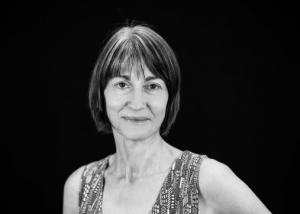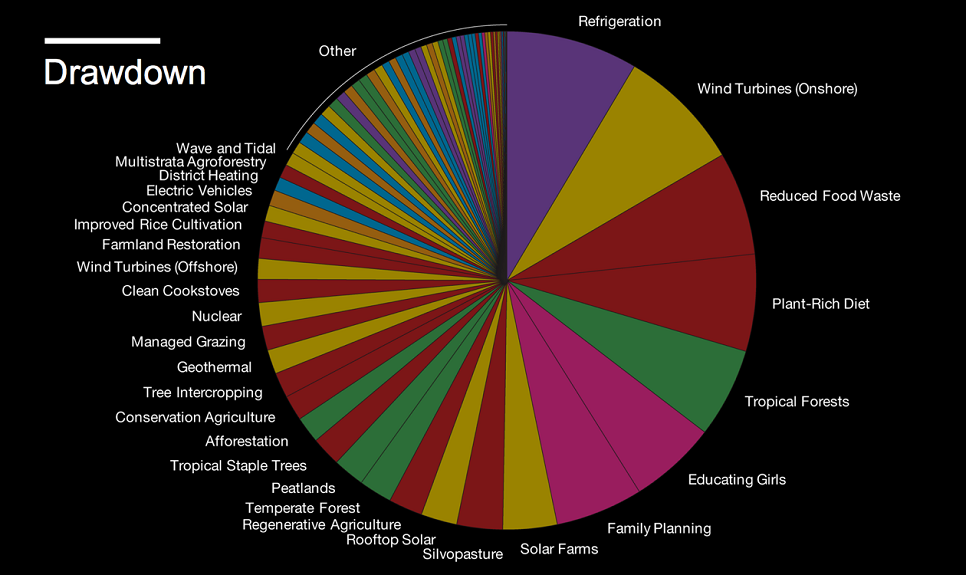Let’s Talk Solutions
What feelings or thoughts come up when you think about global warming? What’s on your mind — your fears, doubts, questions? I’ve been asking this question a lot lately, during community meetings called Introduction to Drawdown.
At the start of our two-hour meeting, when people are invited to call out what’s on their mind about global warming, the air is peppered with words like Worry, Despair, Anger, Powerless and Overwhelmed.
People’s thoughts turn to extreme weather, wildfires, floods, rising sea levels and melting arctic ice. Most people at the meetings are aware of dire warnings in The Special Report on Global Warming published by the Intergovernmental Panel on Climate Change (IPCC). The report calls for urgent and “deep emissions reductions” with “rapid, far-reaching and unprecedented changes in all aspects of society.”
People are worried about their grandchildren’s future, their children’s future, their own future.
Others grieve for lost species. They talk about coral bleaching, collapsing bee populations and forest destruction. Many are aware of the United Nations Report on Biodiversity, where conservation scientists warn that one million species face extinction.
If we could scan people’s brains at this point in the meeting, every amygdala in the room would be lit up like a torch in preparation for fight or flight. Perhaps you too, having read the first few paragraphs of this post, are marshaling your mind’s defenses in a fight/flight response?
Fortunately, this is just the beginning of our conversation. If we’re going to transform the atmosphere, we need to start by addressing our own emotional climate of powerlessness, anger and despair. Problems need to be spoken of and understood in the context of their solutions. Constantly hammered by the problems alone, we just grow numb.
Founded by environmentalist, entrepreneur and author Paul Hawken, the Project Drawdown team spent five years mapping, modeling and ranking the 100 most effective solutions to global warming. They published their findings in 2017 in Drawdown: The Most Comprehensive Plan Ever Proposed to Reverse Global Warming.
The 100 solutions focus on the energy we use, the food we eat, the buildings we live in and more. The Drawdown plan offers ways that individuals and groups can play an active role in reversing global warming.
Aiming to share Drawdown solutions widely, Pachamama Alliance developed an Introduction to Drawdown session. The presentation is available online and is also presented in-person by volunteers across the U.S. and around the world. (Pachamama Alliance is a not-for-profit focused on an environmentally sustainable, spiritually fulfilling, socially just human presence on this planet.)
During the presentation, we get an overview of Drawdown solutions. They range from alternative cement to electric vehicles, solutions that can reduce the amount of greenhouse gases emitted. Other solutions pull carbon from the air. These include protecting tropical forests and regenerative agriculture. Some of the most powerful solutions are social and generational — educating girls and access to voluntary family planning.
The Drawdown solutions are ranked on the total amount of greenhouse gas emissions they avoid or remove from the atmosphere. According to the plan’s authors, we need all of the solutions to solve civilization’s existential crisis.
No silver bullet, no ‘one’ solution, no hero on a white horse — just communities collaborating. Imagine. While a school in the U.S. might focus on offering plant-rich meal options in their cafeteria, a village in rural Uganda might focus on a cleaner cook stove solution for their homes. It’s by identifying solutions that make the most sense and then scaling them up that we might reach the point when greenhouse gases peak and go down on a year-to-year basis. That’s when Drawdown gets real.
Let’s Start with Food for Thought
There’s one solution that everyone in the introductory sessions relates to: Reducing food waste is ranked as the #3 most impactful solution. At a global level, one third of the food raised and prepared never makes it to a table. In the US, rotting produce makes up 50 percent of what you’ll find in a landfill. On the individual level, if you check your fridge right now there’s probably something perishing there before it hits the trash. Once in the landfill, decaying food emits greenhouse warming methane, and all the carbon expended to fertilize, harvest, transport, package and refrigerate that food was emitted for no nourishing purpose.
Individual action is important, but the scale of the problem calls for systemic solutions. Fortunately, there are emerging examples of how communities can work together to reduce food waste. For example, in Portland Oregon, restaurants are getting creative about reducing food waste and food banks are teaming up with supermarkets to rescue edible food and put it on the table.
To Us or For Us?
Toward the end of Introduction to Drawdown, we engage in a thought experiment posed by Paul Hawken:
“Is global warming happening to us or for us? Because if it’s happening to you, you’re the victim, you’re the object. You got born at the wrong time, short end of the stick, not fair. You want to blame somebody else for how you feel, what’s happening.”
We’re invited to transform an emotional climate of powerlessness into a climate of solutions-based collaboration. We ask how we can take action on solutions that make the most sense to us, and scale those solutions up in our schools, congregations, businesses, and communities.
What happens when we’re invited to turn the tables on our own thinking and imagine that global warming is happening for us, and not to us as victims?
“It feeds our imagination,” says Hawken. “It feeds creativity. It feeds innovation. And it feeds a meaningful life.”
So at the close of Introduction to Drawdown we pose this question again, “What thoughts or feelings are coming up for you now?”
This is when we begin to fill the atmosphere with words like Curiosity, Community, Possibility and Solutions.
Learn more about Introduction to Drawdown here.
Pamela Edwards is a writer, communications  consultant and climate activist. She worked for a decade as a communications and marketing executive for a southern California health system and before that as a community organizer for an international development organization. Originally from New Zealand, she now lives in Oregon, where she writes fiction, essays and humor on Medium.com.
consultant and climate activist. She worked for a decade as a communications and marketing executive for a southern California health system and before that as a community organizer for an international development organization. Originally from New Zealand, she now lives in Oregon, where she writes fiction, essays and humor on Medium.com.


